Over recent months (September 2019 to January 2020) I have been visiting Taiwan on three occasions, accompanied by my wife, Caterina. On two previous occasions (2013; 2018) I had presented at Later Life Learning conferences (Chiayi; Taipei), as a guest of the Department of Adult & Continuing Education (DACE) at the National Chung Cheng University (CCU). In September/October, October/November and January of this year, I was a visiting scholar at CCU helping with teaching, research and staff development.
It is difficult to summarize this special experience. Having retired from the University of Waikato at the end of July 2019 as a professor of (adult) education, I had deliberately allowed space in this new “retirement” phase for this kind of opportunity. While my expenses were covered by CCU, my motivation was never to profit financially but nor was it to lose money. I will now reflect on the three visits with a heavier concentration on the third visit in January, just prior to the coronavirus outbreak emanating from mainland China.
A word on the context of Taiwan. Outwardly Taiwan is a fairly homogeneous society following Confucian ideals. To a degree this is true. Yet, as I was to become aware, there are different sub-groups related to historic immigration patterns, primarily from mainland China. Importantly, too, indigenous peoples of around 2% of the population, continue their traditions. Geographically and politically, mainland China occupies a dominant space in which most Taiwanese have considerable ambivalence – most yearning for a democratic future (reinforced at the elections in January) but also conscious of important trade connections to mainland China. In terms of population, around 24 million people occupy the territory equivalent to one-seventh of Aotearoa New Zealand - hence, a population density around 35 times of my homeland. In practice, as we often travelled on the High-Speed Train (HSR) from Taipei to Chiayi, almost constant conurbation on a North-South pathway could be observed through the windows interspersed with intense farming. Not by accident, Caterina and I agreed to be present in Taiwan in the predominantly cooler winter months.
The earliest visit typified the kind of great hospitality of my Taiwanese colleagues. David Chen, our young mentor for each visit, escorted us to accommodation and campus. I was fortunate to have a large office (an unused classroom) in which I could spread out and receive guests. On this first visit, much of my time was spent teaching both undergraduate and postgraduate classes on selected topics, negotiated with colleagues. Obviously, language was a major issue but not entirely different from my own NZ experiences of teaching whereby around half of my classes have been international students from mainland China. In Chiayi, at times I conducted teaching on my own in English; on other occasions, I worked alongside Taiwanese colleagues with impromptu translation; still others David, whose command of English is strong, translated as needed. I learned to plan well but to be flexible.
The second visit included a fairly long period in Taipei where I co-ordinated a seminar on later life learning for the Asia-Oceania International Association for Gerontology and Geriatrics (IAGG) before going to Chiayi. I continued a teaching routine but also undertook a keynote address at an international conference where other overseas contributors came from Japan, South Korea and Thailand. These conferences were also cultural events and featured local seniors demonstrating their engagement with learning in a variety of settings. Another observation was the explicit interconnections of different ministries of government (for instance, in Health & Welfare; Education; Employment) collaborating on active ageing and lifelong learning initiatives.
The third visit in January coincided with the end of semester so teaching was less. This allowed space for investigating research possibilities and for a planned three site visit to Senior Learning Centers across Taiwan. DACE at CCU has been in the heart of Taiwan’s developments in senior education (see reference by Li & Wei, 2019). The policy documents of the Active Aging Learning Center Implementation Plan (2008) and the Senior Education Medium-Term Development Project (2017) have been instrumental guides for the advent of the Active Learning Centers (ALCs). Caterina and I were guests to visit three locations where ALCs had been established from the early days of 2008.
Our first site to visit was to the Pingtung County Senior Education Demonstration Center in a moderate urban setting. The venue (see photo) was originally a kindergarten which closed and is now the ALC. (This is symbolic of the changing demographics to a more aged-centered society). This center was the first established in Taiwan (104 centers in 2008; 368 in 2018) and has been funded, as for all LCs, by the Ministry of Education to a varying extent. All these centers are considered to be a result of collaboration between local, county and national leadership. If accompanied by Senior Education Centers (SECs), the universities are engaged in helping develop these sites. In the case of Pingtung, the SEC is located alongside the ALC in a park-like setting.
The curriculum at the Pingtung site was heavily slanted towards crafts – photography; painting; leathercraft; masks – and Caterina and I were challenged to undertake a small-scale leathercraft exercise (as seniors ourselves). However, there is a partially regulated curriculum from the Ministry of Education to which centers should adhere but also other learning events carefully chosen to reflect local priorities.
In the centers we visited, teachers in programs follow a professional training regime, orchestrated by staff from DACE at CCU. To my mind, other worthwhile initiatives in this location were intergenerational activities, health promotion (driver education; anti-smoking; falls prevention) and support for a long-term care facility.
The second visit was in nearby Tainan, a major coastal city south of Chiayi, especially important in early colonization by the Dutch. This center has been part of an elementary school complex for 11 years and we were enthusiastically welcomed by music and dance as we entered their building (previously disused but now remodeled). This elder membership in Tainan, we were told, was 45,000 strong, ranging in age from 55+ to the 90s; there was a widespread of engagement from young-old to old-old. Quite overtly, there was a strong concentration on new industry aligned to elders’ needs and a salt farm project where more men proportionately were involved. One significant factor is the relatively low literacy level, a result of an older historical cohort, identified at 24.05% at elementary level. Training needs of staff were consistent with the Pingtung group.
Our final visit was to a major city, Taichung, to the north of Chiayi where we were introduced to the Sisters of the Sacred Heart of Mary Senior Learning Center. This setting, amid a high-status Catholic school, was highly urbanized and this LC was one of 29 in this city of 2.8 million. This complex of facilities (including large auditorium in the basement, multi-purpose rooms, senior education center, computer room) covers four floors. There is a counselling facility, mainly telephone, which covers elders’ queries from across the country and supervised by a social worker from the Ministry of Health and Welfare. The overt goals of the LC are to promote learning, train volunteers and reinforce positive attitudes. Government funding provides 70% of costs, the other 30% coming from fees and donations.
The intake for this LC are people of a higher literacy level. Apparently, too, there is little overlap in participation between the LC and the Senior Education Center (on user pays). The scale of this LC/SEC appeared to be extensive – 45-50 teachers; 100 courses; 1000 participants per week; 13 classrooms and four full-time staff. Training of volunteers at multiple levels is a serious activity here and this voluntary workforce is required to undertake strenuous practice in a rural area. While the LC follows the regulations of the M0E, the orientation is towards a needs-based ideology.
To summarize, the LCs are part of a broader plan of provision, funded largely by government through the Ministry of Education and other authorities for seniors (defined as around 55+) to take up learning opportunities later in life. While government regulations provide some consistency across the numerous LCs located in diverse environments, there is an expectation of innovation related to more localised economic/social factors. Most activities are focused on leisure and recreation yet there appears to be a strong movement towards more social enterprise and entrepreneurialism. As in New Zealand, much of the work is undertaken by volunteers. Fortunately, these unpaid older workers are properly trained and gain sustenance from contributing to their peers. The essential point is that learning n later life is treated as integral to lifelong learning for the Taiwanese and receives state support in policy and funding.
Authentic Nike Sneakers | Men's FootwearGallery images (click to enlarge):
Discussion topics:
- Log in to post comments


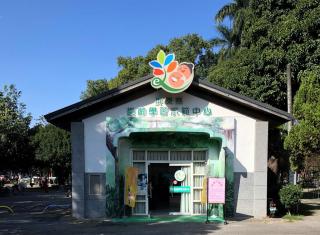
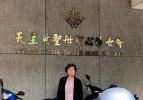
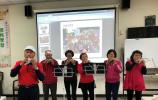

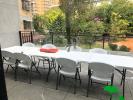




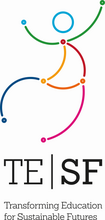

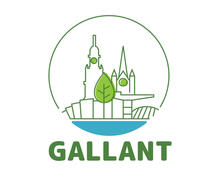

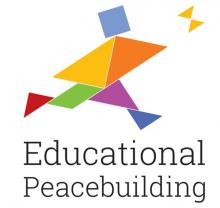


Latest Comments